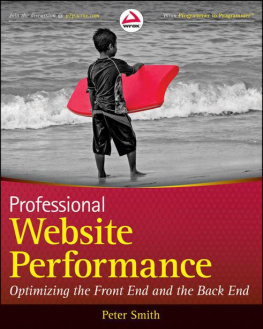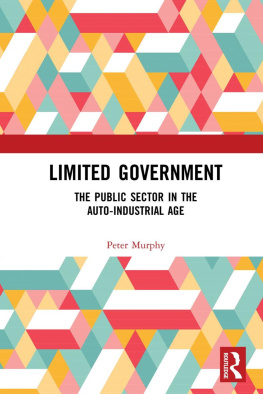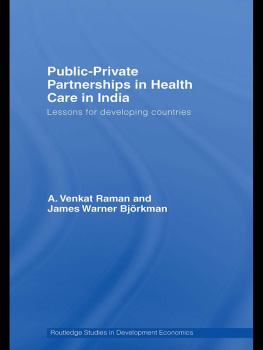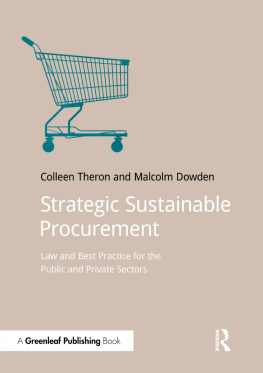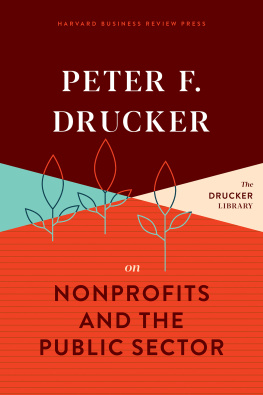Peter Smith
BAD BUYING
How Organizations Waste Billions through Failures, Frauds and F*ck-ups

PENGUIN BOOKS
UK | USA | Canada | Ireland | Australia
New Zealand | India | South Africa
Penguin Books is part of the Penguin Random House group of companies whose addresses can be found at global.penguinrandomhouse.com.

First published by Penguin Business in 2020
Copyright Peter Smith, 2020
The moral right of the author has been asserted
Cover photograph Getty Images
Follow us on LinkedIn: https://www.linkedin.com/company/penguin-connect
ISBN: 978-0-241-43460-4
This ebook is copyright material and must not be copied, reproduced, transferred, distributed, leased, licensed or publicly performed or used in any way except as specifically permitted in writing by the publishers, as allowed under the terms and conditions under which it was purchased or as strictly permitted by applicable copyright law. Any unauthorized distribution or use of this text may be a direct infringement of the authors and publishers rights and those responsible may be liable in law accordingly.
To Jane, Ginny and everyone involved in buying (procurement, supply chain, logistics) in the healthcare sector, and all those they support
Acknowledgements
After many years in which buying bad and good has been at the heart of my career, Im grateful to everyone Ive met who has helped me learn and understand more about the subject, including colleagues, academics and other writers. It would take far too long to name them all but two bosses, Mike Allaway and Doug Greene, taught me great lessons during my relatively early days in business; and Dr Dick Russill was an inspiration as a writer and educator, helping me realize that communication skills were just as important as the technical side of management!
In terms of Bad Buying inspiration, it would seem perverse to thank everyone who has contributed to this book through their incompetence, ignorance or criminality. But genuine appreciation goes to the UKs National Audit Office, which provided excellent analysis of some very interesting case studies that have found their way into the book, and to Transparency International, whose focus on fighting fraud and corruption globally is valuable to every citizen around the world.
More thanks to the team at Penguin Books, including Martina, Celia, Natalie and Mandy, who have been a pleasure to work with at all stages. And, finally, thanks to my daughter and son-in-law, and particularly to my wife Jane, who all put up with me seeing the chance for a story about Bad Buying in pretty much everything we saw, did or talked about!
Introduction
An American space scientist was boasting to his Russian counterpart at a conference that the US had spent years, and many millions of dollars, inventing a pen that would enable astronauts to write notes in the zero-gravity environment of a spacecraft, with a clever mechanism for pumping ink to the nib when gravity couldnt help, as it does on Earth.
Ah, yes, said the Russian thoughtfully. That is certainly a problem, and your solution is very clever. But we use a pencil.
This is a simple but powerful example of how an organization can waste time, money and resources buying something it doesnt really need, or that costs far more than it should. In organizations, government departments and businesses of all shapes and sizes, all round the world, money is being lost, wasted, spent inappropriately, defrauded or stolen. What is the cause of this epidemic? Lets just call it bad buying, because, at its simplest, thats what it is.
These issues are truly global, and the case studies in this book reflect that. No industry or country is immune from bad buying; it exists in every nation in the world, and in almost every organization. When Kentucky Fried Chicken runs out of chicken, to the horror of its customers, or a firm such as Skanska pays large sums of money to fraudsters through invoice misdirection, we can see the result of bad-buying practices or processes. Even in Singapore, Almost every government around the world is guilty of similar failures.
How much is spent on buying by organizations worldwide? Thats not a number that is easy to find or calculate, but there was an estimate in 2012 that all the businesses in the world had a combined revenue of $64 trillion. Increase that by 20 per cent to allow, conservatively, for growth and inflation since then, which gets us to $77 trillion. Lets say, conservatively, that 50 per cent of that is used to buy from other organizations. That gives some $38 trillion of buying spend. It would take an economist to determine exactly what the effect would be if that expenditure could be executed more effectively and efficiently. But clearly even a small saving of a couple of per cent on that huge number would bring major benefits to organizations and would improve the overall efficiency of the global economy.
A recent estimate puts the total global public-sector procurement spend at $13 trillion. A 5 per cent improvement in the value obtained from this money would release another $650 billion every year. That is money that could be used by governments to alleviate hunger, cure diseases or improve education in the developing world. And 5 per cent is not unrealistic, given the scale of fraud and corruption in many countries, as well as the opportunities from improving conventional buying performance. In the UK that percentage saving would mean the potential to double the defence budget, or increase total spending on education by 25 per cent.
In the private sector, no less than 69 per cent of an average commercial businesss revenue is spent on external suppliers. How this money is used has fascinating implications for the profitability of the company. Assume that the company has a revenue of $1 billion and makes a profit of $100 million a 10 per cent margin and that 60 per cent (below the average) of its revenue goes to suppliers. If the firm can improve the efficiency of that spend by just 5 per cent, the $600 million external spend could drop to $570 million, and profit would grow by $30 million. That immediate increase in profit of 30 per cent, from $100 to $130 million, is very significant indeed.
Given how much money is being spent with suppliers, it is perhaps not surprising that it goes wrong occasionally. But sometimes it goes very wrong. In fact at times it can bankrupt the company or, in the case of government, lead to political turmoil, front-page news or even revolutions and resignations.
In this book we will discover why organizations, both public and private, waste billions through bad buying. In we will look at the many cases where it is down to simple incompetence laziness, a lack of knowledge, understanding or information but the end result will have a cost to the organization, sometimes a significant one.
Occasionally, as we will discover in , bad buying has darker, criminal motivations. Ranging from the clerk who creates a fictitious company as a supplier and channels a few thousand into his own bank account, to huge multinational scandals that have led to prime ministers, admirals or CEOs languishing in prison, we will uncover the fraud and corruption at the heart of many buying scandals.
In I propose ten principles that will guide you towards reducing your own risk of buying failure. All organizations are vulnerable to errors, but these steps will ensure that your probability of bad buying is as low as possible.



